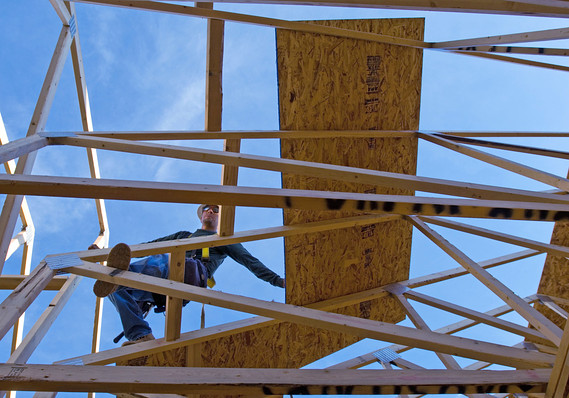 Bloomberg News/Landov
Bloomberg News/Landov
New-home sales at a five-month low. Home contract signings below their year-earlier levels for 18 months in a row. Bond yields near recession territory, and taking mortgage rates down in their wake.
The housing market has been weak for a while, but there are some glimmers of hope, according to fresh information this week from two home builders.
“Our results reflect the fact that the housing market strengthened throughout Q2,” said Stuart Miller, executive Chairman of Lennar Corp. LEN, +0.06% , which reported its second quarter earnings Tuesday.
“We don’t see any storm clouds on the horizon in the housing market,” said Jeffrey Mezger, president and CEO of KB Home, KBH, +1.34% when the company took analyst questions on Thursday.
To some extent, the executives’ bullishness came down to some fairly straightforward principles.
Related: Home builders are a buy again, Wedbush says
Miller cited those lower mortgage rates, and slower price increases, and said “and that, together with low unemployment, wage growth, consumer confidence and economic growth, drove the consumer to return to a more affordable housing market.”
But there were some curious sentiments in the comments, as well. “We believe that the housing market is generally running in a performance channel that is bounded on the downside by the production deficit that has persisted for the past decade,” Miller added.
Translation: we producers haven’t been making enough homes for a decade, so pent-up consumer demand keeps a floor under potential results.
KB Homes’s version was also curiously passive: “supply remains insufficient to meet demand, stemming from the under-production of new homes over multiple years,” Mezger said.
Still, other than keeping business strong by doling out new houses sparingly to a supply-starved market, there are some other signs from both builders that should be encouraging for the housing market.
Read: America’s housing market is competitive, unequal, and often just getting by. Just like us.
Lennar said it had struck a deal to produce single-family houses for rental purposes, seeking both to capitalize on a wave of interest from investors, but also meet consumer demand for renting rather than buying.
KB Home stressed that it was continuing to try to meet demand for lower-priced housing, even in higher-priced areas. In Seattle, for example, its products for first time and first move-up buyers have an average sales price of $385,000, compared to median new-home prices there of $620,000 – and even lower than the median existing-home price of $465,000.
It’s also worth pointing out that if the supply-demand imbalance remains as sharp as it has been, that could benefit the overall market – existing homeowners, for example – not just publicly-traded builders, even if the broader economy falters.
As Lennar President Jonathan Jaffee put it in response to an analyst question, “it’s just a reflection of a long upcycle but one that is defined as slow and steady which in a lot of respects is more healthy than one that is very robust because that can’t last very long.”
Related: Mom-and-pop landlords push investor share of home purchases to 19-year high








